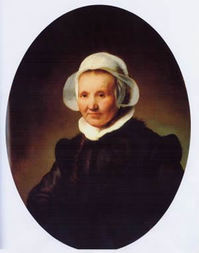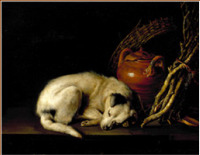In July, I traveled up to Boston, and then Marblehead, where I interviewed Rose-Marie and Eijk van Otterloo, and if their names don’t ring a bell, they will soon. My article about them, just published in The Art Newspaper‘s September issue, calls them “The Most Important Collectors You’ve Never Heard Of.” If and when it is published online, I’ll update this post.
 Meantime, here’s a bit about the story:
Meantime, here’s a bit about the story:
In their charming tale, the van Otterloos began collecting by buying horse carriages to fill a barn they owned in Vermont. It was only at the suggestion of Peter Sutton, then a curator at the Museum of Fine Arts, Boston, and now director of the Bruce Museum in Greenwich, CT, that they started to collect Dutch Old Masters. Now they own what many believe is the best collection of them in private hands — excepting the Queen of England and the Prince of Lichtenstein, if you call their treasures private.
The van Otterloos own Rembrandt’s 1632 Portrait of Aeltje Uylenburgh, Aged 62, seen here (but on loan to the Museum of Fine Arts, Boston), and about 70 other master works. As the article reveals, most of them will go on view next year in an exhibition that starts at the Mauritshuis in the Hague, then moves to the Peabody Essex Museum in Salem, MA. and two other American museums.
And in the article, the van Otterloos say definitively — for the first time, a few sources told me — that they will eventually put the collection into the public domain.
UPDATED: Here’s a link to the article on my website.
 Which lucky museum will get the paintings is not clear.
Which lucky museum will get the paintings is not clear.
For people who care about collecting, though, it’s the story of how they collected that is most interesting. The importance of curatorial advice, their learning by experience, their attention to condition, the ability to wait for the right painting to come along, the impact of buying the Rembrandt, and why they want to show their collection (it’s not what you think) are some of the things that stand out. (Gerrit Dou’s A Sleeping Dog Beside A Terra Cotta Jug, A Basket, A Pile of Kindling Wood, 1650, shown here and also on loan to the MFA, is along with the Rembrandt one of Mr. van Otterloo’s favorites.)
I was most intrigued by the overarching goals, and organization, of their collecting — they have sought to buy specific kinds of pictures that illustrate many dimensions, almost a progression, of each genre in Dutch Old Masters: seascapes, landscapes, church scenes, etc. It’s a model that can be copied.
